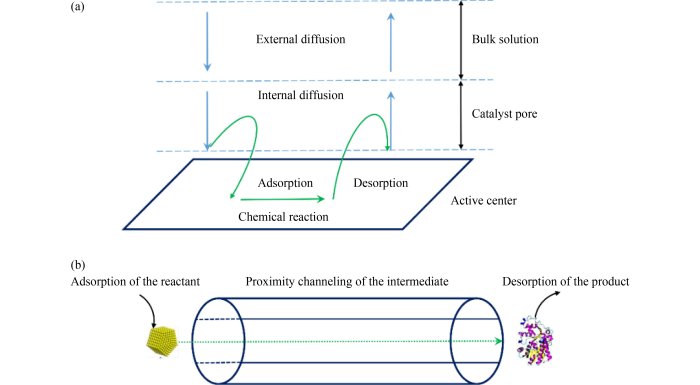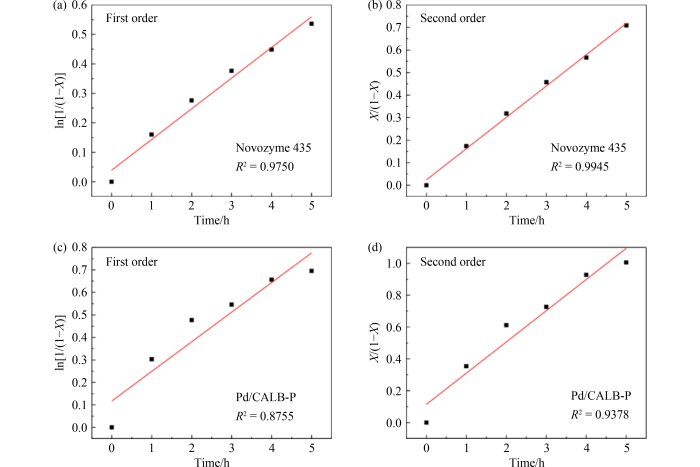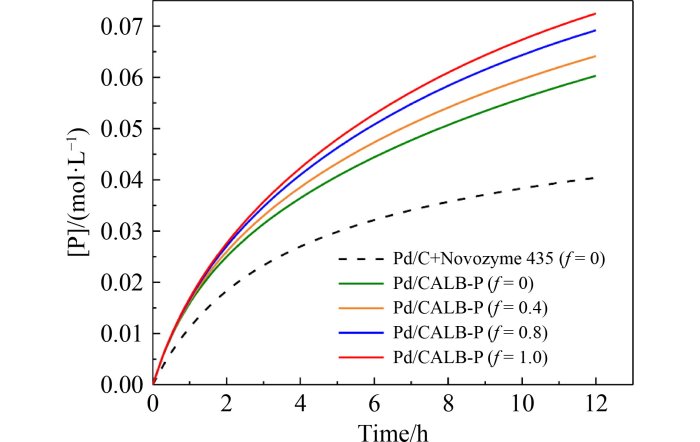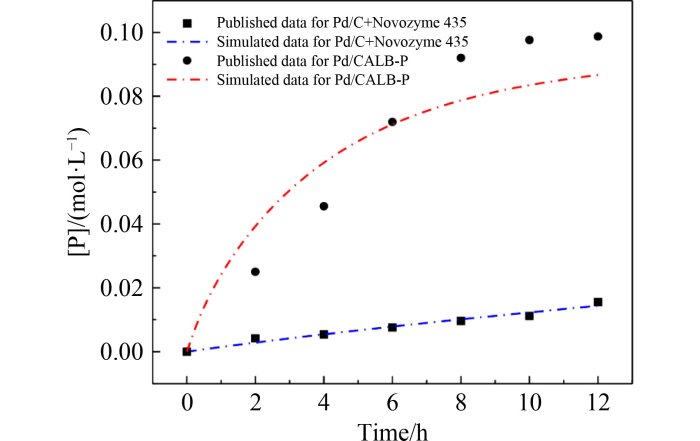A typical reaction catalyzed by EMHCs is the dynamic kinetic resolution (DKR) of enantiomers which is a powerful tool for the synthesis of enantiomerically pure alcohols or amines. In this reaction, the kinetic resolution of racemic mixtures is catalyzed by enzymes and the racemization of the unconsumed enantiomer is catalyzed by metal nanoparticles (NPs) [
13–
17]. Therefore, combined with the
in situ racemization, the resolution process has a theoretical yield of 100% [
18]. For example, our lab has developed an approach to construct EMHCs, using the
Candida antarctica lipase B (CALB)-polymer conjugates as the confined nanoreactor for the
in situ generation of Pd NPs [
19]. The as-synthesized Pd/CALB-Pluronic (Pd/CALB-P) exhibited an excellent catalytic performance during the DKR of (±)-1-phenylethylamine ((±)-1-PEA), demonstrating a 7.6-time efficiency, compared with the combination of commercial immobilized lipase Novozyme 435 and Pd/C. This phenomenon is similar to that in a study conducted by B
ckvall group [
20], in which lipase and Pd NPs were coimmobilized in the cavities of siliceous mesocellular foam (MCF) (denoted as Pd/CALB-AmP-MCF). The Pd/CALB-AmP-MCF catalyst achieved a conversion rate of 95% at 70 °C after 16 h in the DKR of (±)-1-PEA, while 24 h was nearly required to realize a similar conversion when the combination of Pd-AmP-MCF and Novozyme 435 was used [
21]. Moreover, Zhang et al. [
22] reported a method to develop EMHCs based on a core-shell design in which Pd NPs were loaded onto the aminopropyl group modified mesoporous silica nanosphere (Pd/NH
2-MSN) as the inner core and the enzyme was adsorbed on the porous outer shell. The as-synthesized Pd/NH
2-MSN@BTME@CALB/L-mesosilica hybrid catalyst demonstrated a higher efficiency in the DKR of chiral amines than that of the separated counterparts. Hence, despite the various strategies to develop EMHCs, it seems to appear a general phenomenon that the efficiency of EMHCs to catalyze DKR reactions in one pot tends to be higher than that of the separated counterparts. In addition, this phenomenon was also observed in other hybrid catalysts and cascade reactions such as the multi-enzyme system [
23–
25]. Several attempts have been made from various perspectives to elucidate the enhanced activity of EMHCs, including the size effect of Pd NPs [
19], proximity of enzyme and metal active sites [
26], and the microenvironment of catalysts [
27].









